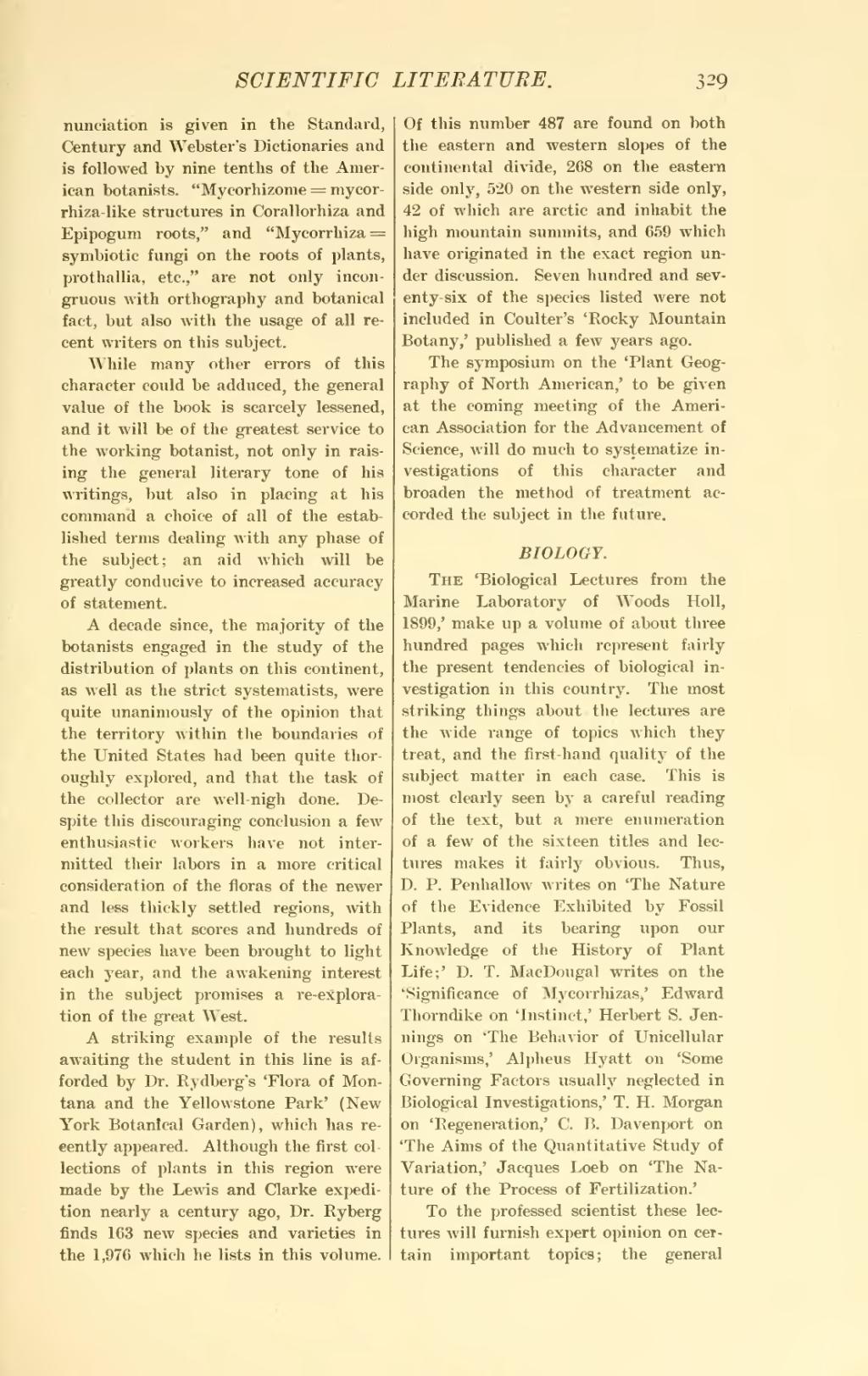nunciation is given in the Standard, Century and Webster "s Dictionaries and is followed by nine tenths of the American botanists. "Mycorhizome = mycorrhiza-like structures in Corallorhiza and Epipogum roots," and "Mycorrhiza = symbiotic fungi on the roots of plants, prothallia, etc.," are not only incongruous with orthography and botanical fact, but also with the usage of all recent writers on this subject.
While many other errors of this character could be adduced, the general value of the book is scarcely lessened, and it will be of the greatest service to the working botanist, not only in raising the general literary tone of his writings, but also in placing at his command a choice of all of the established terms dealing with any phase of the subject; an aid which will be greatly conducive to increased accuracy of statement.
A decade since, the majority of the botanists engaged in the study of the distribution of plants on this continent, as well as the strict systematists, were quite unanimously of the opinion that the territory within the boundaries of the United States had been quite thoroughly explored, and that the task of the collector are well-nigh done. Despite this discouraging conclusion a few enthusiastic workers have not intermitted their labors in a more critical consideration of the floras of the newer and less thickly settled regions, with the result that scores and hundreds of new species have been brought to light each year, and the awakening interest in the subject promises a re-exploration of the great West.
A striking example of the results awaiting the student in this line is afforded by Dr. Rydberg's 'Flora of Montana and the Yellowstone Park' (New York Botanical Garden), which has reeently appeared. Although the first collections of plants in this region were made by the Lewis and Clarke expedition nearly a century ago, Dr. Ryberg finds 163 new species and varieties in the 1,976 which he lists in this volume.
Of this number 487 are found on both the eastern and western slopes of the continental divide, 268 on the eastern side only, 520 on the western side only, 42 of which are arctic and inhabit the high mountain summits, and 659 which have originated in the exact region under discussion. Seven hundred and seventy-six of the species listed were not included in Coulter's 'Rocky Mountain Botany,' published a few years ago.
The symposium on the 'Plant Geography of North American,' to be given at the coming meeting of the American Association for the Advancement of Science, will do much to systematize investigations of this character and broaden the method of treatment accorded the subject in the future.
BIOLOGY.
The 'Biological Lectures from the Marine Laboratory of Woods Holl, 1899,' make up a volume of about three hundred pages which represent fairly the present tendencies of biological investigation in this country. The most striking things about the lectures are the wide range of topics which they treat, and the first-hand quality of the subject matter in each case. This is most clearly seen by a careful reading of the text, but a mere enumeration of a few of the sixteen titles and lectures makes it fairly obvious. Thus, D. P. Penhallow writes on 'The Nature of the Evidence Exhibited by Fossil Plants, and its bearing upon our Knowledge of the History of Plant Life;' D. T. MacDougal writes on the 'Significance of Mycorrhizas' Edward Thorndike on 'Instinct,' Herbert S. Jennings on 'The Behavior of Unicellular Organisms,' Alpheus Hyatt on 'Some Governing Factors usually neglected in Biological Investigations,' T. H. Morgan on 'Regeneration,' C. B. Davenport on 'The Aims of the Quantitative Study of Variation,' Jacques Loeb on 'The Nature of the Process of Fertilization.'
To the professed scientist these lectures will furnish expert opinion on certain important topics; the general
